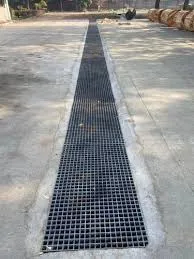
-
 Afrikaans
Afrikaans -
 Albanian
Albanian -
 Amharic
Amharic -
 Arabic
Arabic -
 Armenian
Armenian -
 Azerbaijani
Azerbaijani -
 Basque
Basque -
 Belarusian
Belarusian -
 Bengali
Bengali -
 Bosnian
Bosnian -
 Bulgarian
Bulgarian -
 Catalan
Catalan -
 Cebuano
Cebuano -
 China
China -
 China (Taiwan)
China (Taiwan) -
 Corsican
Corsican -
 Croatian
Croatian -
 Czech
Czech -
 Danish
Danish -
 Dutch
Dutch -
 English
English -
 Esperanto
Esperanto -
 Estonian
Estonian -
 Finnish
Finnish -
 French
French -
 Frisian
Frisian -
 Galician
Galician -
 Georgian
Georgian -
 German
German -
 Greek
Greek -
 Gujarati
Gujarati -
 Haitian Creole
Haitian Creole -
 hausa
hausa -
 hawaiian
hawaiian -
 Hebrew
Hebrew -
 Hindi
Hindi -
 Miao
Miao -
 Hungarian
Hungarian -
 Icelandic
Icelandic -
 igbo
igbo -
 Indonesian
Indonesian -
 irish
irish -
 Italian
Italian -
 Japanese
Japanese -
 Javanese
Javanese -
 Kannada
Kannada -
 kazakh
kazakh -
 Khmer
Khmer -
 Rwandese
Rwandese -
 Korean
Korean -
 Kurdish
Kurdish -
 Kyrgyz
Kyrgyz -
 Lao
Lao -
 Latin
Latin -
 Latvian
Latvian -
 Lithuanian
Lithuanian -
 Luxembourgish
Luxembourgish -
 Macedonian
Macedonian -
 Malgashi
Malgashi -
 Malay
Malay -
 Malayalam
Malayalam -
 Maltese
Maltese -
 Maori
Maori -
 Marathi
Marathi -
 Mongolian
Mongolian -
 Myanmar
Myanmar -
 Nepali
Nepali -
 Norwegian
Norwegian -
 Norwegian
Norwegian -
 Occitan
Occitan -
 Pashto
Pashto -
 Persian
Persian -
 Polish
Polish -
 Portuguese
Portuguese -
 Punjabi
Punjabi -
 Romanian
Romanian -
 Russian
Russian -
 Samoan
Samoan -
 Scottish Gaelic
Scottish Gaelic -
 Serbian
Serbian -
 Sesotho
Sesotho -
 Shona
Shona -
 Sindhi
Sindhi -
 Sinhala
Sinhala -
 Slovak
Slovak -
 Slovenian
Slovenian -
 Somali
Somali -
 Spanish
Spanish -
 Sundanese
Sundanese -
 Swahili
Swahili -
 Swedish
Swedish -
 Tagalog
Tagalog -
 Tajik
Tajik -
 Tamil
Tamil -
 Tatar
Tatar -
 Telugu
Telugu -
 Thai
Thai -
 Turkish
Turkish -
 Turkmen
Turkmen -
 Ukrainian
Ukrainian -
 Urdu
Urdu -
 Uighur
Uighur -
 Uzbek
Uzbek -
 Vietnamese
Vietnamese -
 Welsh
Welsh -
 Bantu
Bantu -
 Yiddish
Yiddish -
 Yoruba
Yoruba -
 Zulu
Zulu
reinforced plastic pipe
The Rise of Reinforced Plastic Pipe Transforming Industries
In recent years, reinforced plastic pipe (RPP) has emerged as a transformative solution across various industries, addressing both efficiency and durability challenges. As sectors such as construction, water supply, and industrial applications seek materials that can withstand the rigors of changing environments, RPP has solidified its place as a go-to choice for engineers and project managers alike.
What is Reinforced Plastic Pipe?
Reinforced plastic pipe is a composite material made by combining traditional plastic with reinforcing fibers, which can include glass, carbon, or other materials. This composite structure enhances the physical properties of the base plastic, resulting in a product that is not only lightweight but also exhibits superior tensile strength, impact resistance, and longevity. The RPP is typically produced through advanced manufacturing techniques, including filament winding or pultrusion, which ensure high-quality and consistent products.
Advantages of Reinforced Plastic Pipe
1. Corrosion Resistance One of the standout features of RPP is its ability to resist corrosion. Unlike traditional metal pipes, which can deteriorate over time due to exposure to chemical substances, water, or environmental conditions, RPP maintains its structural integrity, reducing the need for frequent replacements and maintenance.
2. Lightweight The lightweight nature of reinforced plastic pipe facilitates easier handling and installation. This advantage not only speeds up construction and maintenance efforts but also helps reduce labor costs.
3. Flexibility and Customization RPP can be produced in various shapes, sizes, and thicknesses, making it an adaptable choice for a wide range of applications. This flexibility allows engineers to design systems that meet specific project requirements without compromising quality.
4. Cost-Effectiveness Although the initial investment in RPP might be higher compared to traditional materials, its durability and reduced maintenance needs contribute to a lower total cost of ownership. This long-term cost efficiency makes RPP an attractive option for capital-intensive projects.
reinforced plastic pipe

5. Environmental Impact With growing global concerns about sustainability, RPP also offers an environmentally friendly alternative to traditional piping systems. Many manufacturers incorporate recyclable materials in their production processes, and RPP's longevity contributes to reduced waste in landfills.
Applications of Reinforced Plastic Pipe
The versatility of RPP means it can be applied across numerous fields
- Water Supply and Distribution RPP is increasingly used for potable water systems, irrigation, and sewage systems due to its corrosion resistance. Its longevity ensures reliable service under high-pressure conditions.
- Oil and Gas Industry In the oil and gas sector, RPP is utilized for transporting fluids and gases where traditional materials may fail. Its resistance to chemical degradation makes it suitable for harsh environments.
- Mining Mining operations often face tough conditions, including exposure to chemicals and high temperatures. RPP is employed for slurry transport and drainage applications, proving its worth in demanding environments.
- Construction Reinforced plastic pipes are also used in various construction applications, such as drainage systems, conduits for electrical wiring, and ventilation systems, providing long-lasting solutions that enhance the integrity of structures.
Conclusion
Reinforced plastic pipe represents a significant advancement in material science, offering solutions that address the critical needs of various industries. As manufacturers continue to innovate and develop more sustainable practices in producing RPP, its adoption is expected to grow further. With its unique combination of strength, durability, and resistance to environmental degradation, RPP not only meets current industry demands but also paves the way for future developments in infrastructure and industrial applications. As we look toward a more sustainable and efficient future, reinforced plastic pipe stands at the forefront, ready to support the demands of modern engineering.
Latest news
-
Exploring the Benefits of Top Hammer Drifter Rods for Enhanced Drilling PerformanceNewsJun.10,2025
-
High-Precision Fiberglass Winding Machine for GRP/FRP Pipe Production – Reliable & Efficient SolutionsNewsJun.10,2025
-
FRP Pipes & Fittings for Shipbuilding - Corrosion-Resistant & LightweightNewsJun.09,2025
-
Premium FRP Flooring Solutions Durable & Slip-ResistantNewsJun.09,2025
-
Premium Fiberglass Rectangular Tanks Durable & Lightweight SolutionNewsJun.09,2025
-
Tapered Drill String Design Guide Durable Performance & UsesNewsJun.09,2025









